Heterotopias
Serafín Álvarez (ES), Daniel Canogar (ES), Gerhard Mantz (DE), Antoine Schmitt (FR), Pablo Valbuena (ES)
Curator: Pau Waelder
In a text written en 1967, Michel Foucault described the heterotopia as “capable of yuxtaposing in a single real place several spaces, several sites that are in themselves incompatible.” He was referring, among others, to the projection room of the cinema, in which a two-dimensional screen presents a fictional three-dimensional space. Artists working with 3D animation and projection mapping have explored this concept by either transforming the perception of a physical space through the ephemeral intervention of projected images and light, or creating a virtual space that combines different environments (sometimes in impossible contiguity) and invites the viewer to explore them. These artworks constitute heterotopias that invite us to be more aware our environment and observe how architecture can affect our state of mind. They also suggest some of the many possible alternatives that digital spaces offer to our bricks and mortar dwellings.
See a preview of this selection on Niio
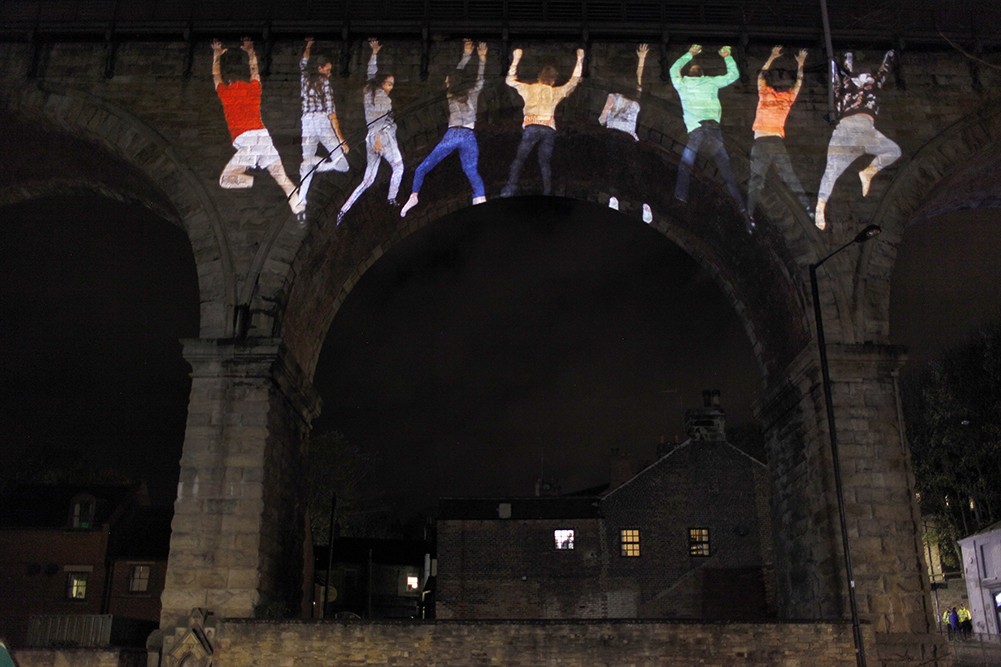
DANIEL CANOGAR
Asalto Durham
Lumiere Festival, 11th – 15th Nov, 2015. Durham, UK. Utilizing methods of public intervention and video installation, Daniel Canogar’s Asalto is a projection that symbolically releases our fantasies of overcoming imposed obstacles in our lives. Engaging individuals as spectators and participants, a staged interaction takes place between a “stormed” site and collected imagery of a virtual public. In the work’s process of production, participants based in Durham, UK, were invited to crawl across a horizontal green screen, as if they were climbing up a wall. This filmed action is projected onto a facade. In either case, Asalto is born from a desire by the artist to have viewers project themselves, literally and metaphorically, onto their immediate environments.
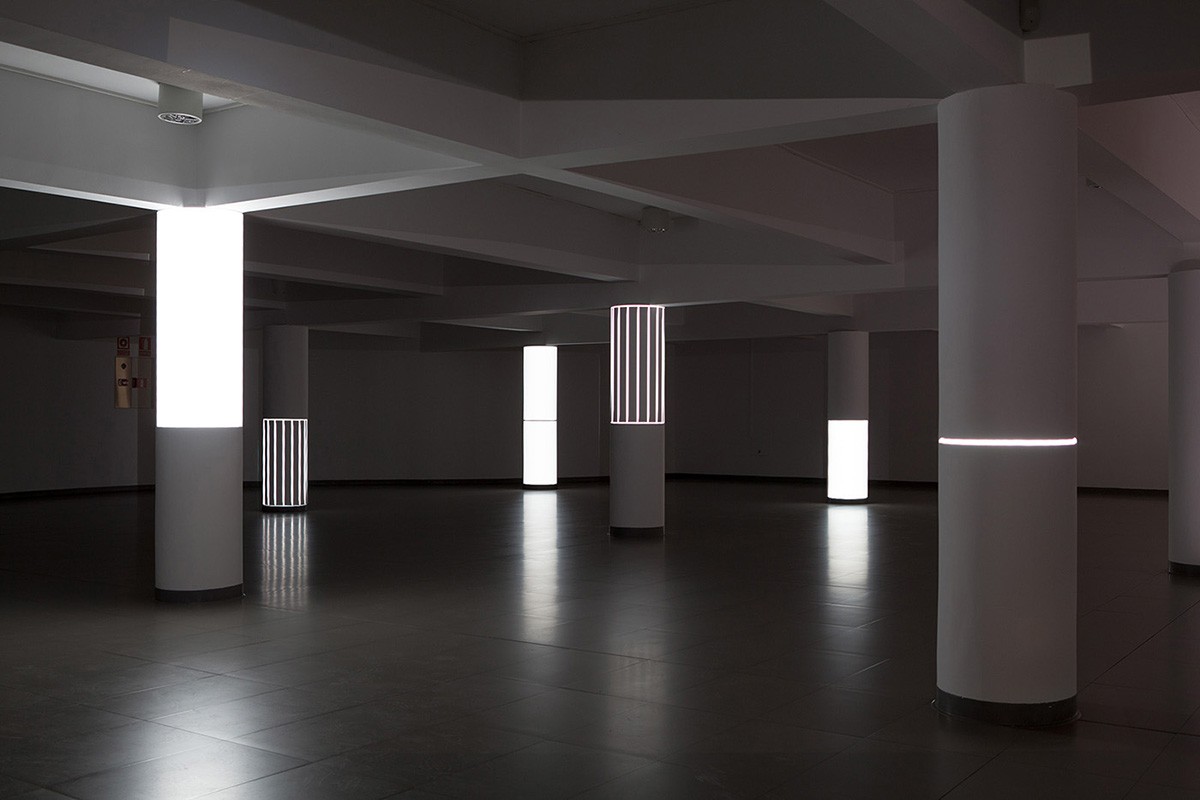
PABLO VALBUENA
site study [6 columns]
The ‘site studies’ series are filmed interventions that haven’t been widely accessible because of their location or their ephemeral quality. They are recordings of real video projected light on real architecture. They are filmed with the camera as a fixed observer and played back in a seamless, silent and continuous loop.
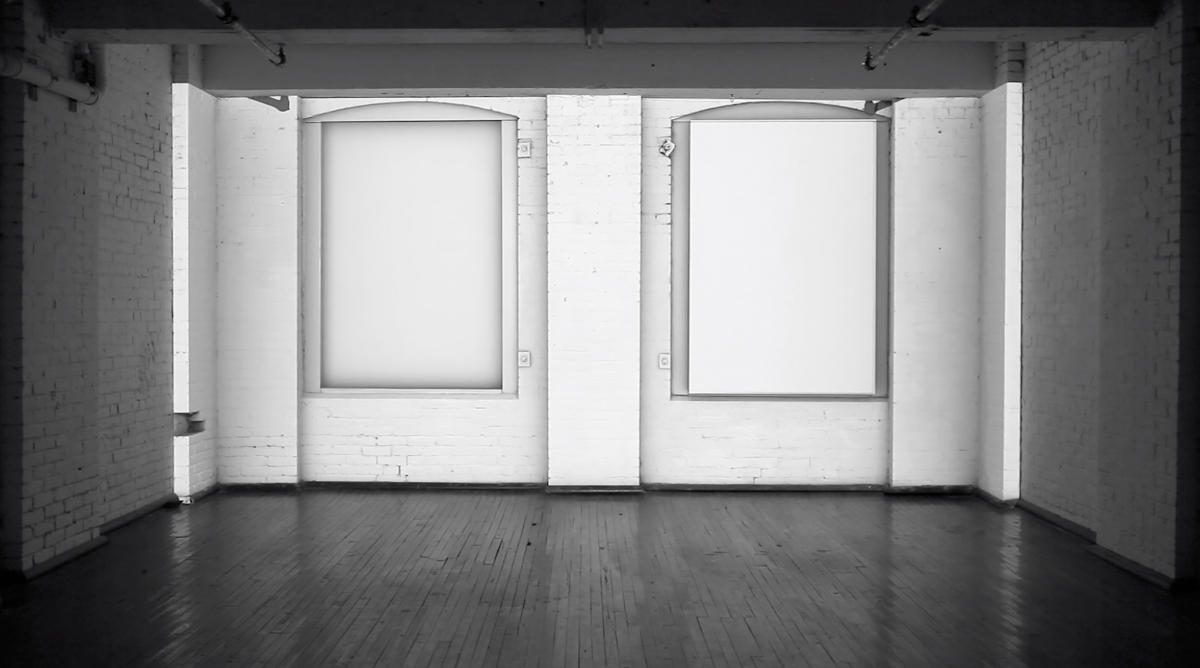
PABLO VALBUENA
site study [windows]
The ‘site studies’ series are filmed interventions that haven’t been widely accessible because of their location or their ephemeral quality. They are recordings of real video projected light on real architecture. They are filmed with the camera as a fixed observer and played back in a seamless, silent and continuous loop.
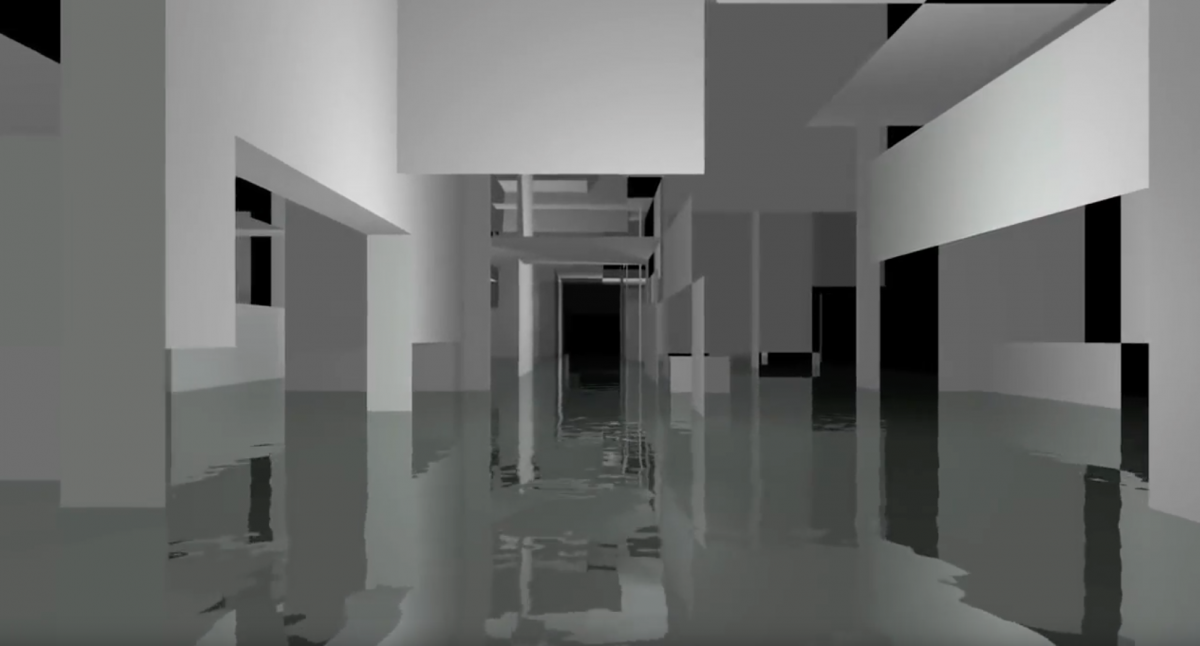
GERHARD MANTZ
Labyrinth No. 17
In this work, the artist creates an intriguing architectural space that the camera explores by moving always forward, through corridors, doors and walls generated by the computer in endless variations. The neat white structures, partly immersed in water, appear unstable and unreal. The dreamlike sequence invites us to explore a place that, while resembling a physical space, can finally only be perceived as a visual composition, always different yet somehow the same.

ANTOINE SCHMITT
Facade Life ArtParis
Façade Life Antoine Schmitt 2007 Monumental generative installation on facade Synopsis Facade Life is a monumental active installation on facade. In Facade Life, an abstract visual shape endlessly paces on a facade, in relationship to its architectural elements. It slides on the borders, hits the window frames, bounces on the door sides, circulates in the available spaces. It inhabits it. Algorithms of artificial life and physical equations recreate the behavior of an abstract wild tiger in a cage : a nervous body, free but confined. Facade Life is issued from an artistic principle where existing facades are re-interpreted by programmed dynamics shapes, to initiate a dialectics between physical reality and a parallel level of reality. Site-Specific The Facade Life installations are site-specific installations, ephemeral or persistent, but always unique. Outside, they function only at night, but inside they can be permanent. They can be monumental (size of a building, more than one façade, …) or the size of a room.
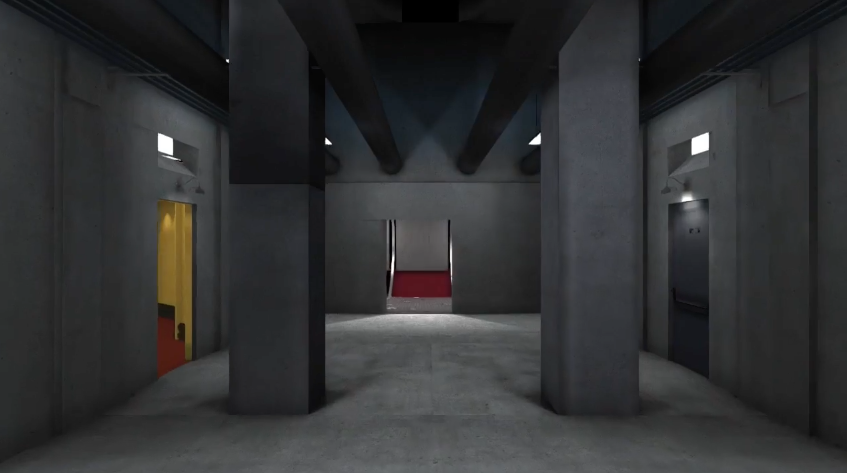
SERAFIN ALVAREZ
Maze Walkthrough (Video Version)
In this artwork, which has been developed as a playable videogame, the artist has created an imaginary architectural space made of fragments of sets from science fiction films. The spaces that this walkthrough presents to us are doubly fictional, since they only exist as a 3D rendering, based on environments that never existed, except as a stage for a cinematic narrative.
